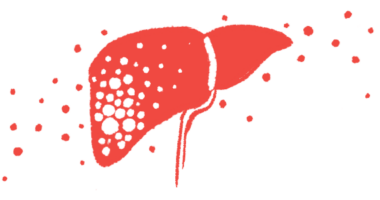Children with fatty liver disease MASLD have higher mortality risk
In US, about 1 in 10 kids has disease, and up to 1 in 4 children with obesity

Children with metabolic dysfunction-associated steatotic liver disease (MASLD), a form of fatty liver disease, are more than 40 times more likely to die than age- and sex-matched children in the general population, a study in the U.S. shows.
“MASLD poses a real and measurable threat to pediatric health,” Jeffrey Schwimmer, MD, the study’s first author, a professor of pediatrics at the University of California, San Diego’s School of Medicine and the director of the Fatty Liver Clinic at Rady Children’s Hospital, said in an university press release. “To truly change outcomes, we need better tools to diagnose this disease, treatments that work for children, and systems that ensure every child has access to that care.”
The study, “Long-term mortality and extrahepatic outcomes in 1,096 children with MASLD: A retrospective cohort study,” was published in Hepatology.
In MASLD, formerly nonalcoholic fatty liver disease, fat builds up in the liver in association with metabolic risk factors, such as obesity, high blood fat levels, or diabetes. MASLD can set the stage for liver damage and scarring (fibrosis) that can lead to fatal outcomes like liver failure. MASLD is the most common liver disease in children. In the U.S., roughly 1 in 10 kids have MASLD, and up to 1 in 4 children with obesity have it. Despite this prevalence, not many studies have evaluated long-term outcomes for children with the disease.
A disease with life-threatening potential
Schwimmer and his colleagues retrospectively assessed outcomes from nearly 1,100 children, ages 2-18, diagnosed with MASLD at Rady Children’s Hospital between 2000 and 2017. The children were followed for a mean of 8.5 years.
Results showed that 3.4% of the children died, a mortality rate that’s more than 40 times higher than the national average in the U.S. for age- and sex-matched children. Nearly half of the deaths were directly related to liver disease. Others were due to heart-related diseases, accidents, or suicide. This mortality rate was strikingly higher than that reported for children with obesity or type 2 diabetes alone, “suggesting that MASLD may confer independent risk beyond associated metabolic conditions,” the press release states.
“We have shown that MASLD in children is a serious disease with life-threatening potential,” Schwimmer said.
Further statistical analyses showed the risk of early death for children with MASLD was higher in boys and in those with lower levels of high-density lipoprotein, a fatty molecule often called “good” cholesterol. Moreover, many children with MASLD developed other health conditions, including abnormal levels of fatty molecules (26%), high blood pressure (14%), obstructive sleep apnea (10%), and type 2 diabetes (7%). Obstructive sleep apnea is a condition where sleep is interrupted by abnormal breathing.
“Pediatric MASLD is associated with significant premature mortality and a substantial burden of [health problems both in and out of the liver],” the researchers wrote. “These findings highlight the need for timely screening, early intervention, and long-term management strategies to improve outcomes for children with MASLD.”
“Our hope is that these findings lead to greater awareness and stronger investment in pediatric-specific diagnostics, treatments and systems of care,” Schwimmer said. “With the right tools and commitment, we can make a meaningful difference in outcomes.”
The research was partially funded by the National Institutes of Health, the Rady Children’s Hospital San Diego Physician Fund, and a research grant from Intercept Pharmaceuticals.







